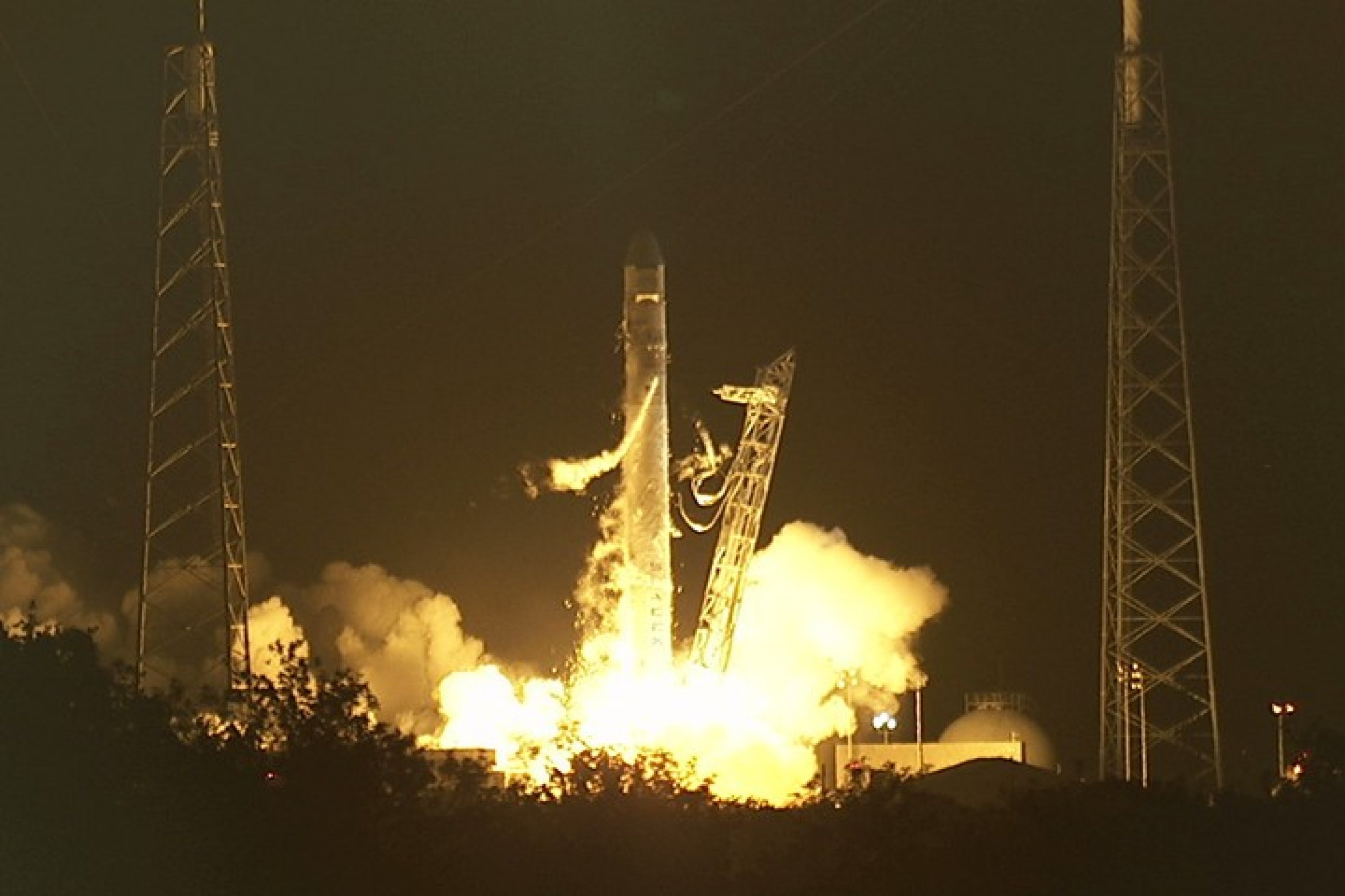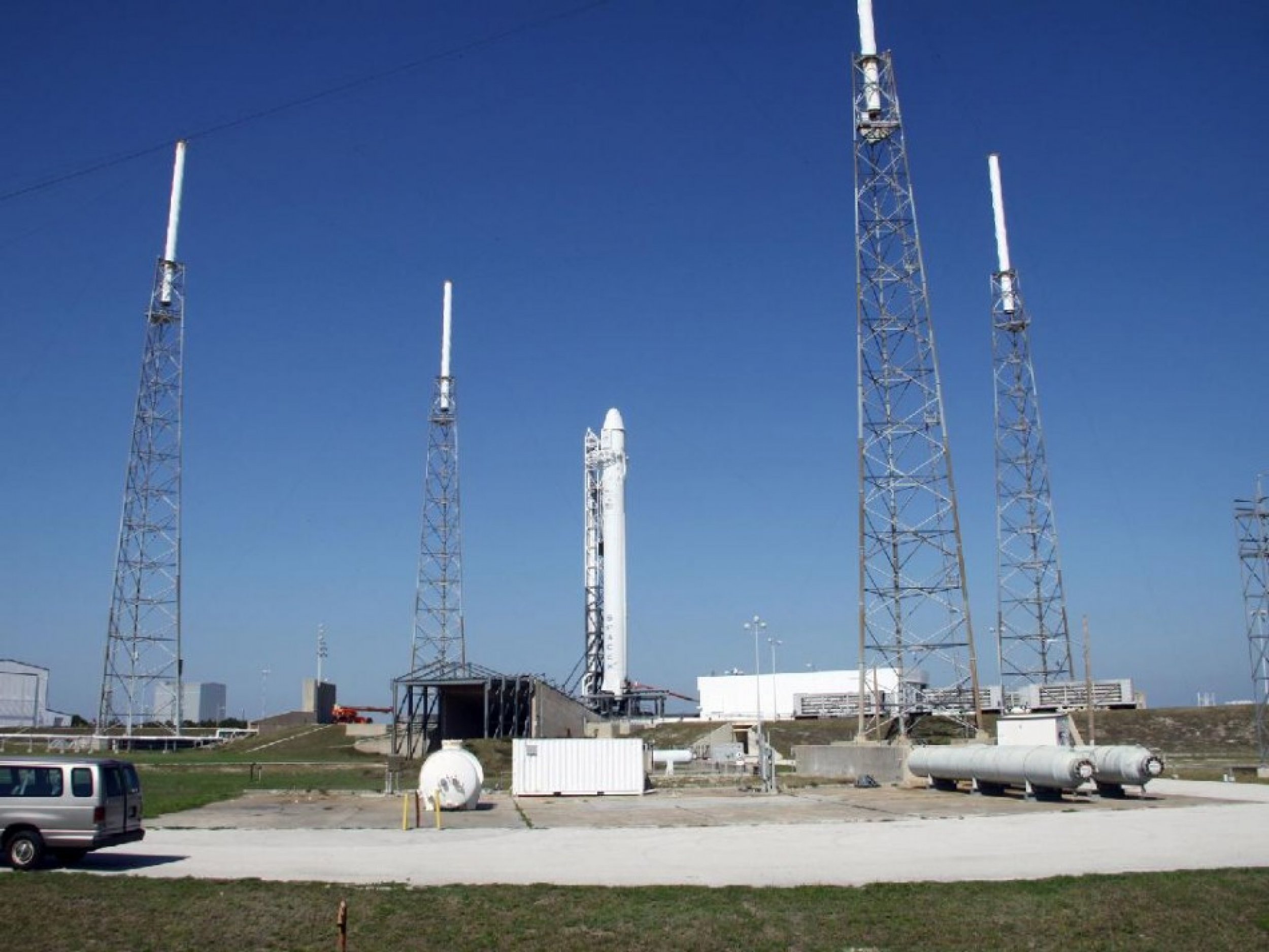SpaceX Falcon 9 Commercial Rocket Lifts Off For International Space Station [PHOTOS & VIDEO]
Marking the beginning of the second demonstration mission for NASA's Commercial Orbital Transportation Services (COTS) program, SpaceX's Falcon 9 rocket lifted off Tuesday from Cape Canaveral Air Force Station in Florida at 3:44 a.m. EDT. The rocket carried the Dragon capsule into orbit and would reach the International Space Station in a few days.
The launch took place three days after the rocket aborted a previous launch attempt. After the first attempt got called off, the SpaceX team reportedly speeded up the process to prepare the Falcon 9 for a second try Tuesday morning, and this time there were no issues whatsoever.
Today marks the beginning of a new era in exploration; a private company has launched a spacecraft to the International Space Station that will attempt to dock there for the first time, NASA Administrator Charles Bolden said.
The Dragon spacecraft is powered by solar arrays that have already unfurled. It will rendezvous with the International Space Station and go through numerous navigation and other tests before it approaches close enough to the orbiting laboratory, allowing the station's robotic arm to grapple it and connect it to the station.
On Thursday, May 24, Dragon will perform a flyby of the space station at a distance of approximately 1.5 miles to validate the operation of sensors and flight systems necessary for a safe rendezvous and approach. After the analysis of the flyby by NASA and SpaceX managers, the Dragon capsule will be cleared to rendezvous and tie up with the space station on Friday, May 25.
The Expedition 31 crew on board the station would use the orbiting complex's robotic arm to capture Dragon and install it on the bottom side of the Harmony node, NASA said in a statement.
According to NASA, it has achieved a significant milestone with the flight as it has developed, along with SpaceX, the next generation of the US spacecraft to carry the critically important experiments, payloads and supplies to the ISS.
The Dragon is carrying about 1,200 pounds of supplies for the crew of the station and experiments designed by students. The spacecraft can hold 7,300 pounds of material for delivery to the station. Food and clothing make up the bulk of the supplies.
The capsule will remain connected to the station for about three weeks, allowing astronauts to empty it before loading used scientific equipment inside for the return to the Earth. While removing the Dragon, astronauts will reverse the process of connecting the spacecraft to the station by using the robotic arm. The Dragon will then de-orbit and return to the Earth under parachutes, diving into the Pacific Ocean off the California coast.
Based in Southern California, SpaceX or Space Exploration Technologies Corp. was founded by Elon Musk, a co-creator of PayPal, a decade ago. He has invested millions of his own money into the company while NASA has contributed $381 million as seed money. Altogether, the company has spent more than $1 billion on the effort, according to the Associated Press.
SpaceX and Orbital Sciences, which will perform its own test flight later this year, have been working under NASA's COTS program. Once the companies have successfully completed their test flights, they will begin delivering regular cargo shipments to the station.
NASA said that it is also developing the Orion spacecraft and Space Launch System (SLS), a crew capsule and heavy-lift rocket that is expected to provide an entirely new capability for human exploration beyond low Earth orbit.
Have a look at the video and pictures of SpaceX Falcon 9 launch below.





© Copyright IBTimes 2024. All rights reserved.






















